While the retail marketing model is still alive and well, there’s no denying that direct-to-consumer (DTC) marketing is becoming an increasingly attractive option.
DTC brands have the opportunity to engage, well, directly with their audience. They also have more control over prices since they don’t have to sell their products to retailers at a deep discount.
In this article, we’ll outline what direct to consumer marketing is and why it has grown so dramatically over the last few years. We’ll also go over some of the most effective DTC marketing strategies and take a look at a few brands that have made a name for themselves in the DTC space.
In this post, we’ll look at:
● What is direct-to-consumer (DTC) marketing?
● What’s the difference between DTC and B2C marketing?
● Pros and cons of DTC marketing
● DTC marketing strategies
● Successful DTC brands
What is direct-to-consumer (DTC) marketing?
Direct-to-consumer (DTC) marketing is the promotion of products and services directly to customers instead of going through a separate store or seller. It targets specific customer groups with personalized messages through various channels.
DTC brands have more control over their audience relationships and retail marketing. This eliminates the need for middlemen, such as wholesalers or distributors, who act on behalf of your brand. However, this also means that they have to manage more of the sales workflow, including shipping and customer service along with branding and marketing.
DTC companies have to entice leads to buy directly from them, so they need to take a more proactive approach to outreach. For example, DTC brands typically have a strong presence on social media as well as employ other marketing channels such as email, SMS, and push notifications.
What’s the difference between DTC and B2C marketing?
While business-to-consumer (B2C) companies also have to market to consumers, they typically sell through online and/or physical retail vendors. With that in mind, they don’t have to attract customers to a storefront or website to generate sales. The retailer does a lot of the marketing for them.
However, digital marketing practices rarely stagnate for long, and the pandemic has pushed many traditional B2C brands to expand into a DTC approach. More and more companies are starting to rely on DTC marketing to stay afloat in a rapidly evolving market.
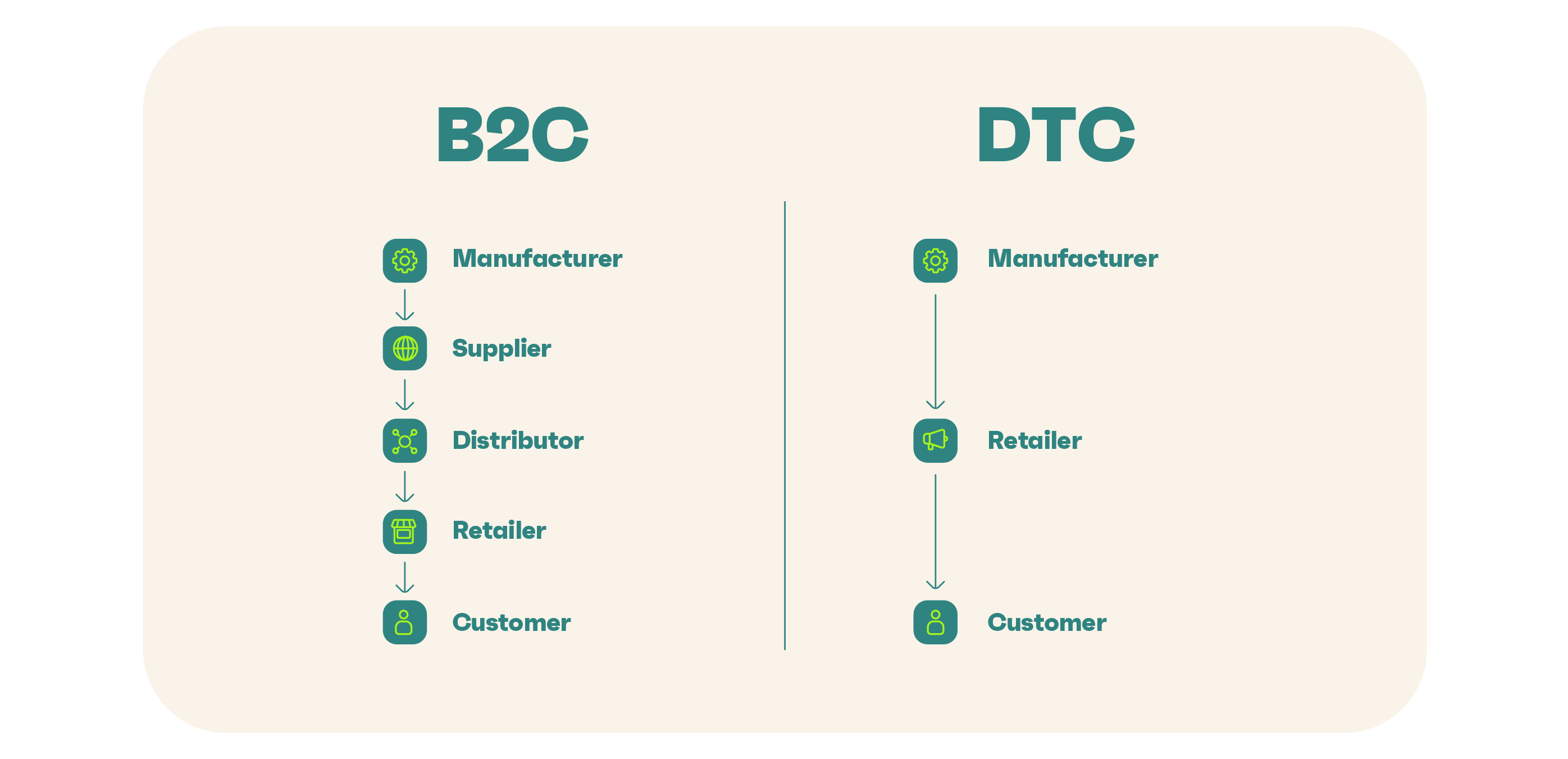
Pros and cons of DTC marketing
This table highlights the pros and cons of DTC marketing to help you understand it better.
| Pros | Cons |
| Direct relationship with customers | High upfront investment |
| More control over brand narrative and engagement | Limited brand touchpoints and reach compared to retailers |
| Shorter time-to-market | No leverage on retailer reputation |
| Flexibility in branding and marketing strategies | Higher customer acquisition cost |
| Faster innovation based on direct customer feedback | Need for robust digital infrastructure |
| Flexibility and adaptability | Logistical challenges |
DTC marketing strategies
A one-size-fits-all direct to consumer strategy isn’t always effective. Successful DTC brands leverage a strategic mix of tactics to amplify reach and conversions, including:
- Building a community of engaged followers
- Personalized emails
- Social media marketing
- Influencer marketing
- Custom products
- Brand personality
- Social activism
- Classes and education
1. Building a community of engaged followers
DTC brands thrive on strong relationships with their customers. That’s why building a community of engaged followers is a key DTC marketing strategy.
This connected group of loyal customers becomes your brand advocates, spreading the word and bringing in sales. How do you cultivate this community?
Here are several ways:
- Create a dedicated space: Encourage discussions on your website through a forum or community section, as seen in the image below. Visitors can sign up with their email addresses, take part in discussions, ask questions, and connect with others who share their interests
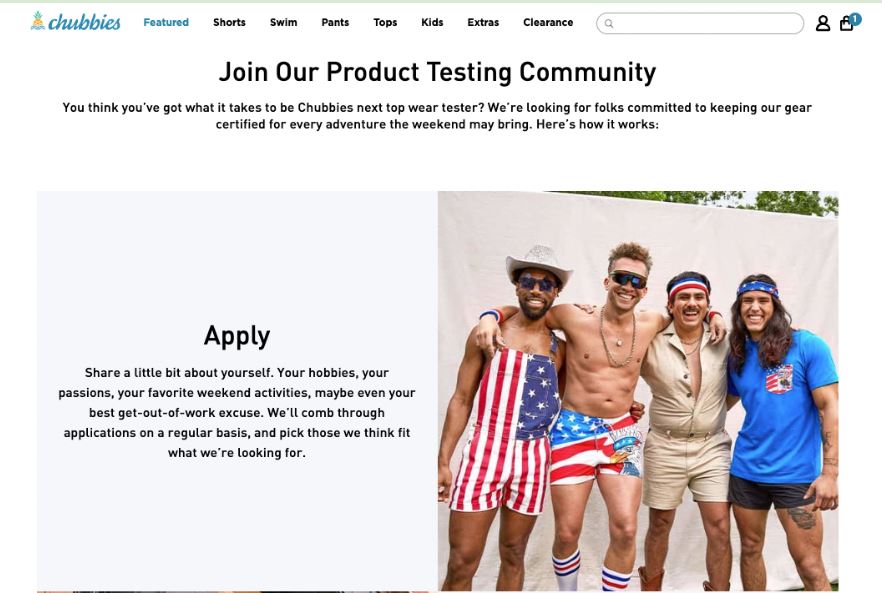
- Engage with your audience on social media: Be active on social media platforms where your target audience is mostly active. Respond to comments, host live Q&A sessions, and encourage user-generated content
- Build an email list: Use popups and website forms to capture email addresses. This way, you can share updates and exclusive offers and connect with your audience
 | DTC marketing case study Island Olive Oil switched to Omnisend to improve their ecommerce marketing strategy. Omnisend helped them automate their email messages and target their campaign. As a result, Island Olive Oil attributes 39% of its email marketing revenue to automated messages and has recorded an increase in conversion rate. See the full customer success story. |
2. Personalized emails
Personalization is a powerful tool in email marketing, especially for DTC businesses. You can use information about your subscribers’ interests, purchase history, and browsing behavior to craft targeted email campaigns that resonate with each individual.
As a result, this could increase the chances of them engaging with your email or making a purchase.
In the example below, a shopper browsed their Ice Fil Tech Tight product page but left before buying. This personalized email reminds them of the product and encourages them back to their carts, leading to 50% more revenue per email.
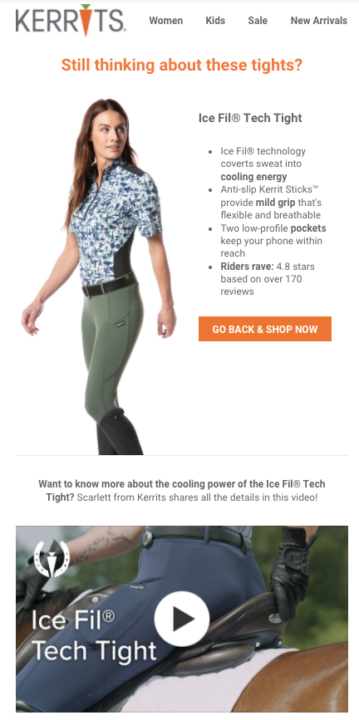
Kerrits’ workflow includes several automated messages, including welcome emails, cart abandonment reminders, seasonal newsletters, order confirmation messages, and follow-ups for re-engagement.
Automated emails take personalization to the next level.
Traditionally, personalization in email would be the standard {FirstName} in a subject line or the body. However, automation means that the email is sent only after the shopper completed an action.
This means it’s unique to that shopper at that time. Because this timely email is sent in response to a shopper’s actions, it is much more effective.
★★★★★
“Affordable yet powerful.”
“I love using Omnisend because it’s affordable and very easy to use but also powerful enough to let me create any kind of marketing campaigns I can think of – including the forms I need to go with those campaigns. This means I can get really creative with my ideas and easily put them into action, all in one place. It’s a great tool for reaching out to people in the way I want.”
Lynette G., G2 review
3. Social media marketing
Social media marketing isn’t limited to DTC businesses, but it’s particularly effective for companies that rely on direct relationships with their buyers. Consistently publishing unique, valuable content will help you keep social media users engaged with your brand.
With a strong social media presence, you’ll also be able to pull user-generated content from your followers. For example, you might ask users to post pictures of themselves using your products with a hashtag related to your brand.
In this example, Better Homes and Gardens is running a contest for users who post pictures of their front yard with the hashtag #BHGBestFrontYard. This will help them generate more engagement while tying back to the products they’re selling.

Remember to ask entrants to share the information with their own friends or followers when running a contest. Giving users an extra entry for sharing your contest on their profile will help you generate more word-of-mouth marketing.
Related:
How to use email campaigns to collect user-generated content for your brand
4. Influencer marketing
Authenticity is a critical element of branding, but cultivating a strong brand image isn’t always easy. Influencer marketing enables DTC businesses to leverage the existing reputation of an influencer.
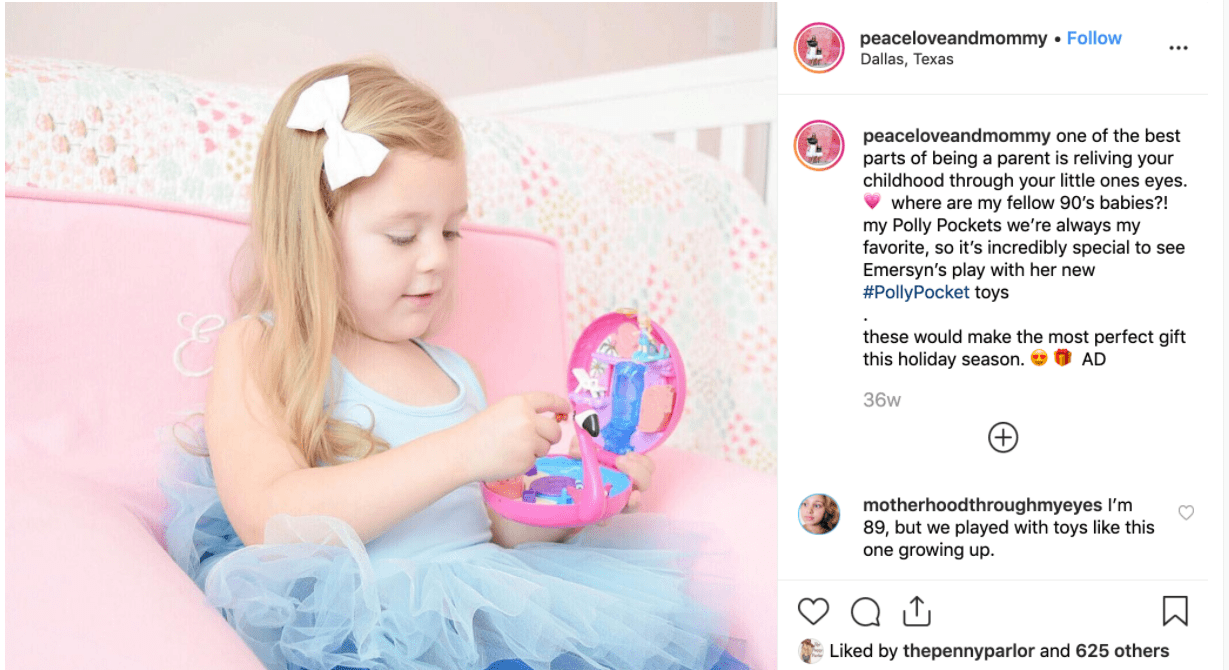
As a DTC vendor, the most important thing is to find influencers that align with your brand image and can give their audience the right impression. You should also make sure that their audience matches up with the consumers you typically sell to in terms of basic factors like age, gender, and location.
One key benefit of influencer marketing is that you’ll pay for results instead of paying for impressions. If a particular influencer doesn’t generate many conversions, you can simply end the relationship without losing too much money.
Related:
Instagram for ecommerce: The definitive guide
5. Custom products
While some DTC brands only sell ready-made products, custom products are sometimes the best way to cater to the unique preferences of each buyer. With more customers looking for personalized items, there’s a growing market for custom-made products of all kinds.
Asphalte provides one of the prime DTC marketing examples showcasing the power of custom products.
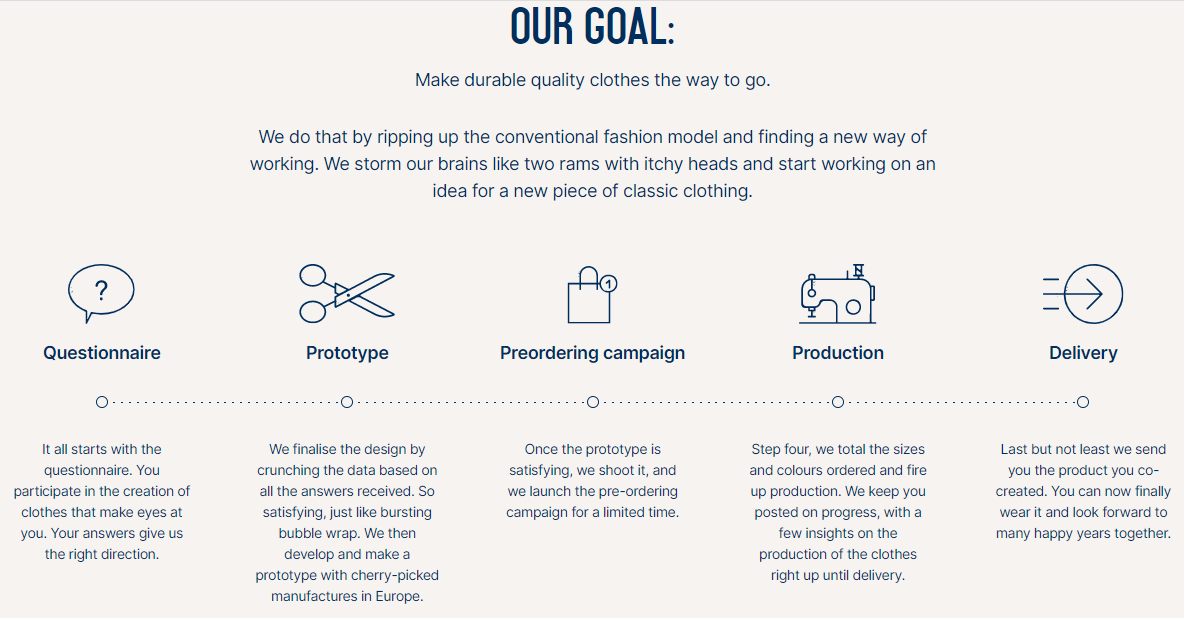
First, they ask their audience about the types of items they’d like to see. From there, they use the feedback to create prototypes, which are used as models for pre-orders.
This process gives customers more control over the items they purchase and leads to better audience engagement.
Asphalte is one DTC ecommerce example that leverages customization to achieve success on Shopify. Here are more examples:
The 25 top Shopify Plus stores to learn from in 2024
6. Brand personality
Brand personalities are one of the most valuable resources for DTC businesses. Your unique brand image will stick in a lead’s head and make them think of you the next time they need one of your products.
Of course, a distinctive brand personality has to be developed over time and across multiple channels. Larger teams should consider implementing style guides and standard visuals so that their content appears the same on every platform.
For example, Snif uses whimsical descriptions that connect their fragrances to emotions and experiences. This helps showcase their brand personality.

Related:
- 9 tips to write high-converting product descriptions in your emails
- Writing product descriptions: Guide with examples [+Template]
- Free product description generator powered by AI
7. Social activism
Along with lower prices and a more convenient experience, a commitment to social causes is another key reason why many younger consumers gravitate toward DTC brands.
For example, Patagonia, a DTC outdoor apparel company, is known for its activism in environmental causes. This resonates with younger consumers who are passionate about sustainability.

8. Classes and education
DTC brands can leverage educational content to build trust and credibility with their target audience. Customers are more likely to purchase from a brand they view as an expert in their field.
Educational content and classes can be used to showcase the benefits of a DTC brand’s products. This is a great way to get potential customers to try the products and see their benefits.
Educational content can also be used to build a community around a DTC brand. By offering classes and workshops, you can create a community of engaged followers who are already interested in what you have to offer.
Baking Steel, for example, offers free online pizza-making classes to establish itself as an authority on pizza making.

Successful DTC brands
If you’re interested in moving into the DTC space, it’s hard to find better models than Baking Steel, Everlane, Chubbies, Warby Parker, and Dollar Shave Club.
These businesses have found innovative ways to create a unique DTC image and offer consumers a simpler, more personal experience than they’re used to getting from retail vendors.
1. Dollar Shave Club
Dollar Shave Club is one of the most well-known brands in the DTC marketplace. It’s a perfect illustration of how the DTC model often provides a more efficient experience compared to retail vendors.
Instead of having to remember to go to the store and buy a new pack of razor blades every time they run out, customers can simply start a subscription and set up a schedule that works for them.
This approach cuts out the traditional retail vendor. Once customers see how it works, they realize that they’re paying the retailer more money for an experience that’s less convenient.
Dollar Shave Club’s famous YouTube video is one of the best examples of viral marketing in the 21st century. In roughly 90 seconds, they give viewers a taste of their irreverent brand image while explaining the business model and teasing the low prices customers can expect when they open a new subscription.
2. Everlane
Everlane is a DTC vendor focusing on clean, minimalist designs and transparency in the supply chain. Their commitment to “radical transparency” leads them to publish detailed information about their production processes.
Furthermore, Everlane has publicly pledged to stop using new plastic, reduce their per-product carbon emissions by 2030, and achieve net-zero emissions by 2050. These practices give Everlane more credibility among young consumers and have contributed to a unique brand image.
This simple, minimalist illustration demonstrates the impact of Everlane’s radical transparency. Consumers can see exactly where their money is going — details that most retail vendors hide at all costs.
Those who want to learn more can easily find that information on the Everlane website:
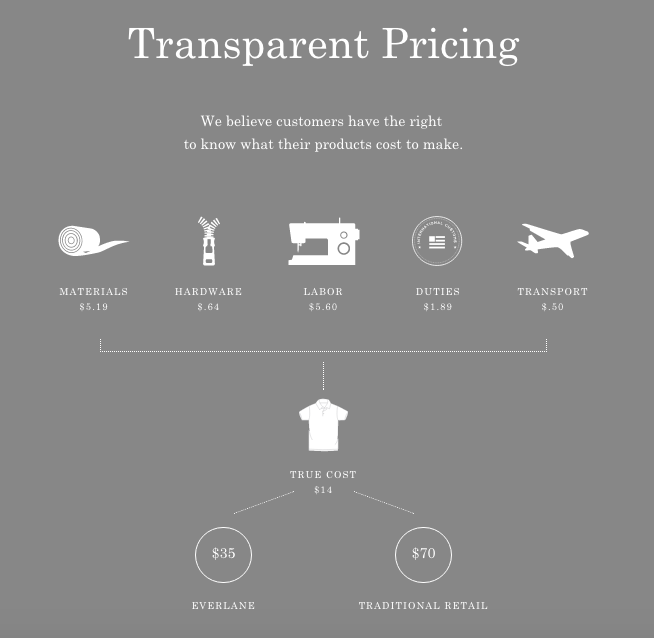
3. Chubbies
Chubbies is a growing menswear brand that focuses on shorts and swimwear.
Chubbies also sells other articles of clothing, including shirts, jackets, and sweatshirts. Its fun, casual style has made the brand particularly popular among young consumers.
In the post below, Chubbies offers a clear representation of its brand image and invites users to contribute. User-generated content is a great way to facilitate two-way communication and get your social media followers more engaged.

Related:
How to start a t-shirt business: Tools & tips for success
4. Warby Parker
Warby Parker gives consumers access to eyeglasses, sunglasses, blue-light glasses, and other products at affordable prices through a simple buying process. People who might not have made the effort to buy glasses in the conventional way will find Warby Parker to be much more approachable.
The Warby Parker iOS app also differentiates its services from competitor offerings. Users can quickly download the app and use the virtual try-on feature to see how they would look in different pairs.
The app has an incredibly high average score of 4.9 out of 5 based on roughly 289,000 reviews, indicating that users are extremely satisfied with its functionality.
Warby Parker is also famous for its “buy a pair, give a pair” initiative. Every time someone buys a pair of Warby Parker glasses, another pair is donated to a person in need.
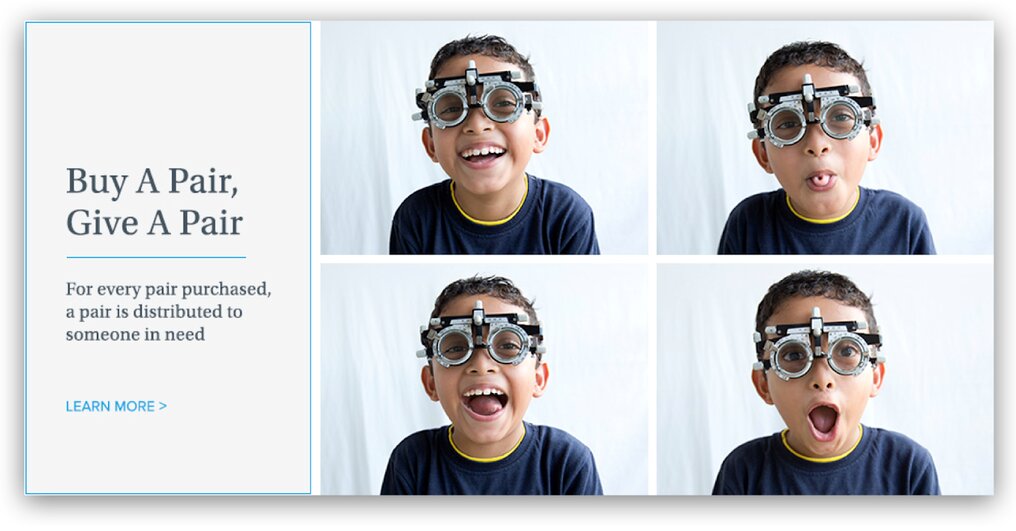
This aligns with the growing trend of corporate responsibility. In fact, 74% of consumers from ages 22 to 37 believe that brands should take public positions on social values.
5. Baking Steel
Baking Steel is a DTC brand that sells pizza steel baking tools. They offer free online cooking classes covering a variety of pizzas and breads.
Some of their specific offerings include classes on making English muffins, cheesy calzones, and ultra-thin crust pizzas. Baking Steel perfectly positioned themselves to meet this demand, offering the essential tool for aspiring home pizzaiolos.
By offering free online cooking classes, Baking Steel is educating potential customers about the benefits of using pizza steel. They’re also creating a community of engaged followers who are interested in baking.

 | DTC marketing case study: Baking Steel Omnisend’s features, such as segmentation and automation, allowed Baking Steel to target specific customer groups with relevant messages. This resulted in significantly higher engagement metrics and revenue with automated messages, accounting for 33% of their email revenue. Read the full success story here. |
Conclusion
The DTC approach isn’t new, but it has become a more viable option over the last 10 or 20 years. These are just a few examples of how leading DTC brands are disrupting the traditional retail model.
As a (likely) smaller brand, you should take encouragement that your brand is in the part of its journey where you have more freedom. You have fewer eyes on you, so you are able to experiment much more widely than if you’re an already established brand.
Beyond that, when you try out these different DTC marketing initiatives, don’t expect to be perfect right off the bat. DTC brands can capitalize on imperfections and criticisms to appear more human and relatable than traditional retail giants.
This is also a great way to engage directly with your audience, respond to their comments and concerns, and actually show them how you incorporate their feedback into your products.
Source from Omnisend
Disclaimer: The information set forth above is provided by omnisend.com independently of Alibaba.com. Alibaba.com makes no representation and warranties as to the quality and reliability of the seller and products.



